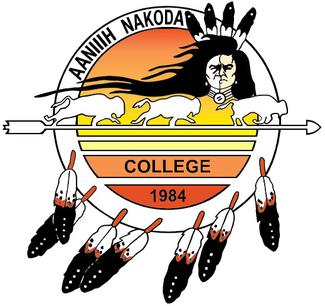Below is a summary of the abstract you submitted. Presenting author(s) is shown in bold.
If any changes need to be made, you can modify the abstract or change the authors.
You can also download a .docx version of this abstract.
If there are any problems, please email Dan at dar78@pitt.edu and he'll take care of them!
This abstract was last modified on May 2, 2018 at 6:45 p.m..

Aaniiih Nakoda College Phage Hunters who participated in the 2017 Fall semester Phage Discovery course (the College’s first time to offer the course), collected soil samples from either a demonstration vegetable garden or a medicinal plant garden both located on the College’s campus. We were able to discover a novel phage, TwoJumps, which was isolated from the host Mycobacterium smegmatis. The soil sample was collected from a raised bed containing the plant comfry (Symphytum officinale) in the medicinal plant garden. The isolation method was enrichment and the plaques produced were large and cloudy, characterizing TwoJumps as temperate. Unfortunately, once TwoJumps was isolated, purified and lysate was collected, a severe snow storm occurred that resulted in an extended power outage on campus and the campus was closed for several days. Upon return to campus, the students unsuccessfully attempted to continue with calculating the titer of their lysate. Also, the students were unsuccessful in reculturing their phage. It is suspected that the lysate (originally stored in a 4℃ refrigerator) degraded during the power outage. After this situation occurred, the students attempted to collect new soil samples and re-isolate Mycobacteriophage, however, by this time of year, the soil in the gardens were frozen. So, the students were unsuccessful in extracting DNA to send off for sequencing. As a result of not having phage DNA sequences to work with for the Phage Bioinformatics course, a request was made to the University of Pittsburg for Mycobacteriophage sequences that could be used by students in the 2018 Spring semester Phage Bioinformatics course. The University of Pittsburg replied with the sequence for Veracruz, a Mycobacteriophage in Cluster A3. Veracruz was isolated from an enriched soil sample at Southern Connecticut State University in 2011. Veracruz displayed small cloudy plaques and is a temperate phage. The genome was annotated using bioinformatics software including DNA Master, NCBI and phagesdb Blastp, Phamerator, Starterator. The length of the genome is 50,062bp and had 85 predicted genes. After annotation, Veracruz genome had 81 genes. The less conservative changes are in genes appear near the end of the genome and likely code for non-essential functions. While the 89 genomes in the A3 cluster are relatively similar to each other, 33 vary largely near the end the genome starting at the RecB-like protein. These 33 genes along with 15 other genomes contain a different minor tail gene than the other phage.


